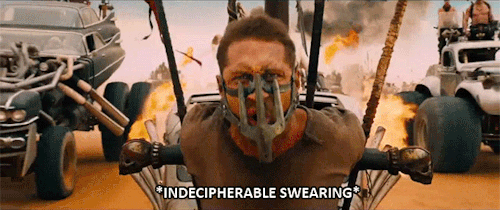
The Oscars are nigh, and the agents of cinematic fortune have gifted the world’s audience with a shiny addition to the filmic canon of American critical acclaim: Mad Max: Fury Road.
The reasons this gem of high-octane, scorching escapism shouldn’t exist are so well-worn they may as well be a molding leather jacket in a movie studio basement. The fact remains, Mad Max is a big brutal masterpiece.
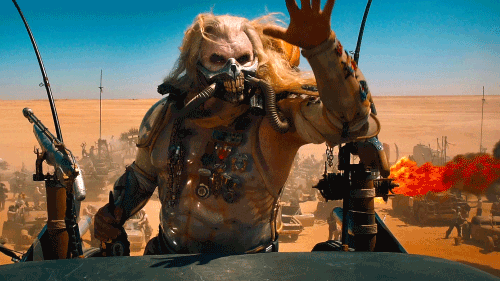
Let’s give ‘em a show, War Boys!
Not to be trite, but the movie’s soooo good because a lot of really talented people put a lot of thought into it. Everyone’s on their A-game, here. And, in rare form, Oscar’s love is proof. The movie’s ten nominations include just about every category of movie making that goes in front of the camera. From the hair and cosmetics, to the costumes, to the sets, everything the eyes mop up is certified brilliant.
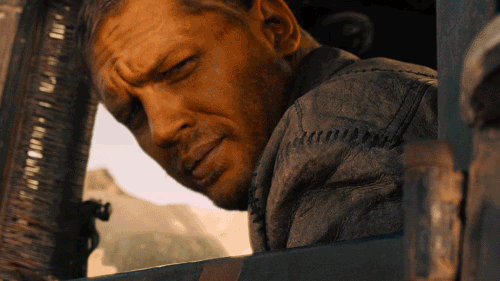
Well played, everyone.
The big reason it’s so amaze-balls? It’s a great story. If director George Miller’s learnt one thing from decades of making movies, it’s that simple can be so much better.
Not that there isn’t a lot going on in Fury Road. Reproductive rights, women’s liberation, the corruption inherent to establishment patriarchy, environmental abuse, and the People Eater are all inextricable components woven taught to comprise this thoughtful piece examining exploitation in the wake of the apocalypse.
Also, can’t stress this enough, the People Eater:
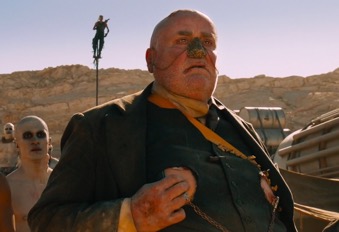
That’s about as dignified as a fat guy can look while wearing nipple clamps.
Mad Max goes beyond simple labels. This isn’t sci-fi or fantasy. As the eponymous Max grunts at the outset, this is a story about fire and blood. The stuff that lets us live. The stuff we can’t live without. It tears apart the post-apocalyptic landscape and shows us how a person can do good in a land and people without any goodness to spare.
So, I’ve selected a few artworks that really sum up the post-apocalypse that Max and crew are living in. Just because some artworks have a little figurative dust on the frame doesn’t mean they can’t be brutal. Post-apocalyptic fears have been around for a long time, and have, to an extent, been a reality at points in history.
Spoilers ahead for Fury Road. But, for real. The movie’s been out for almost a year. Go see it, already!
5. Dulle Griet (Mad Meg) by Pieter Brueghel the Elder at the Museum Mayer van den Bergh

It’s a painting called Mad Meg, so of course it’s the first one out of the gates. The story is a popular Dutch myth about a wild and crazy lady who gets her #girlsquad riled up to raid hell. Because screw you, Satan. You don’t run this, Meg runs this. Just like how Immortan Joe realizes when Imperator Furiosa and Max rip his jaw off on the way through the canyon toward the citadel.
But hellscapes like this were pretty common around the Netherlands, and Brueghel the Elder made a specialty out of showing us the worst of the worst possible nightmare scenarios. With invasions by Spain, the Inquisition, and a general instability in government, it’s easy to imagine that the average Dutch and Flemish person felt like the world was going to engulf them at any moment.
4. The Carcass of the Brebeuf Jesuit by Francisco Goya at the Queen Sofia Arts Center
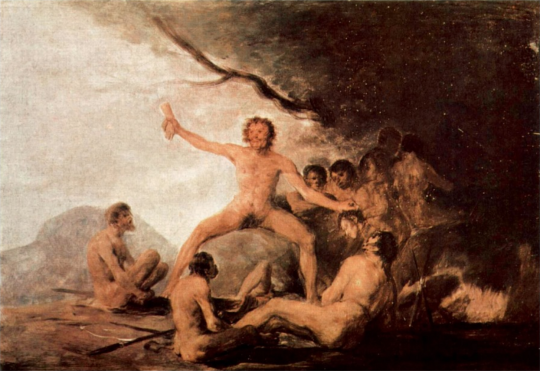
Like Max, the Brebeuf Jesuit wandered into an unfamiliar land and got snatched up. Unlike Max, he didn’t have the balls to make a run for it. Instead of the Outback, Brebeuf was in wild America. Land of a different kind of Outback. The locals didn’t take kindly to Brebeuf sticking his Jesus where it wasn’t wanted, so they tortured him and then ate his heart because he put up with the torture so well. Kind of like a compliment. Granted, by the time the story reached the continent there was probably some embellishment. The same way that Immortan Joe’s status as an immortal god was a little embellished among the War Boys.
3. The Last Judgement by Hieronymus Bosch at the Academy of Fine Arts Vienna
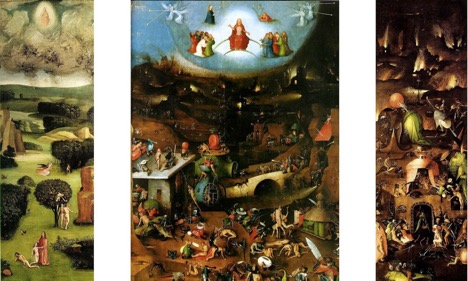
Bosch was for Brueghel the Elder what Madonna was for Lady Gaga, and what the Vuvalini were for Imperator Furiosa. Bosch set the stage for Brueghel’s early works before the latter went off in their own direction. Here, Bosch uses a triptych and offers an experience close to what Max lives with throughout the movie in the form of the flashbacks. The apocalypse happened somewhere in the white space between the left and the middle panels. Picture the right panel as how much worse it can get. Rule of thumb for the Apocalypse: Sometimes it won’t get better, but things can always get worse.
2. Judith Beheading Holofernes by Artemisia Gentileschi at the Uffizi Gallery
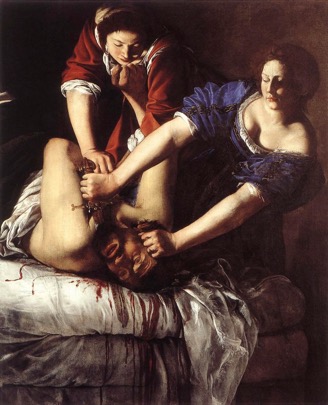
As we’ve talked about, one of the most important threads running through Fury Road is the focus on the tribulations of women under a patriarchal system that treats them like objects #truth. That’s something Artemisia Gentileschi knew all too well. Her tutor raped her and then, at the trial, she was tortured with thumbscrews to make sure her accusations were all on the level. With all that in mind, take a gander at her Judith and Holofernes.
Judith was a Jew in a town under siege by Assyrian baddy Holofernes. No one would do anything about Holofernes sitting outside their gates, and he was going to come in and slaughter the whole town any day. So, Judith went out to his tent, tricked him with her sexuality, and cut his head off. Boom, no more problem. Gentileschi’s portrayal, more than any other, shows Holofernes struggling and Judith really digging in. For her, the apocalypse was about to happen. She stopped it like a boss.
1. Raft of the Medusa by Theodore Gericault at the Louvre
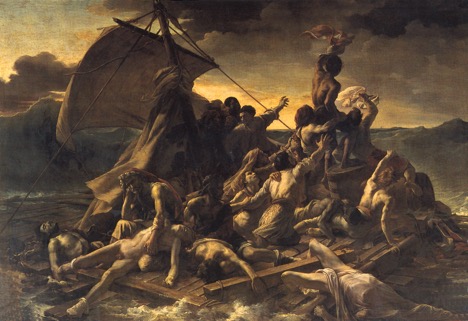
Gericault’s giant take on the tragedy of the frigate Medusa leaves us with one question: How are these people going to move on with their lives? They’ve murdered or cannibalized the rest of their crew. A ship is on the horizon about to provide rescue.
The obvious question in a post-apocalypse movie like Mad Max is what will the characters have to go through to survive? The interesting question is what the characters are willing to do and, quick follow-up, how will they cope with such survival? Medusa hits you in the face with these questions. It’s the ultimate post-apocalyptic painting. The subjects have gone through hell, and now they have to keep going.

I made it through the post-apocalyptic wasteland and all I got was this more post-apocalyptic wasteland.
Technical know-how and talent can make representations of the post-apocalypse pretty and all, but artistry and vision make it something to behold. Fury Road, like these paintings, grabs you by the neck and invites you to survive alongside the characters. To feel like you’re a part of the action. And, really, to wonder what you might do in a similarly (unbelievable) situation.
Whatever happens on Oscar Sunday, Mad Max: Fury Road is in good company as far as works of art go. Good on everyone who made it happen.
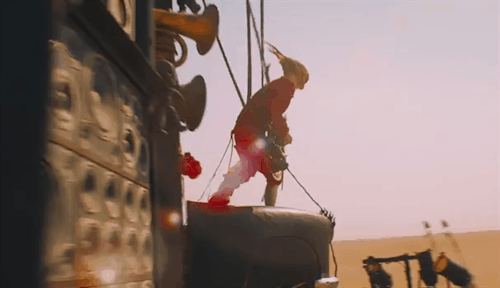
See ya at the Oscar after-party!
By: Clayton Schuster










this was a great movie!